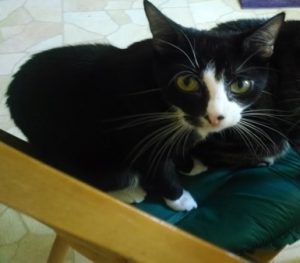At Belle Mead Animal Hospital we understand that considering procedures that involve anesthesia can be intimidating. Anesthesia does involve some risk in animals, just as it does in humans. There is no way to completely remove all risk when doing anesthesia. Therefore, a pet owner’s concerns are certainly warranted. You are putting a great deal of faith and trust in your veterinarian’s office when scheduling your pet for an anesthetic procedure.

It is important to keep in mind that there are no state regulations or nationwide standards for anesthetic drugs or procedures in veterinary medicine. Not all individuals are the same, and not all drugs are created equal. If our primary goal was to do things as quick and as cheap as possible we could use a standard inexpensive protocol for every animal. This type of medicine would also not involve thorough anesthetic monitoring and adequate monitoring after the procedure. Please keep these things points in mind when comparing prices from various hospitals. At Belle Mead Animal Hospital, our primary goal is to make things as safe as possible for each individual patient. We believe that each individual pet should be treated as a member of your family. This does require more work on our part. But we believe it is what each patient deserves.
Important points to make sure your pet’s anesthesia is as safe as possible:
1) Proper case selection: Make sure an adequate exam is done prior to scheduling a procedure. Preanesthetic blood work is also critical prior to most procedures. At BMAH we do not use a “one size fits all” protocol. This physical exam and the blood work results will help your doctor determine which protocols and drugs are best for your pet. At BMAH we try to use a multi-drug approach so that the smallest amounts of each drug can be used. This allows for quick induction, smooth recovery, and less risk of side effects from each particular drug.
2) Intravenous Access: An intravenous catheter is placed in your pet’s vein where fluids can be administered. This catheter is critical should any of your pet’s vitals change during the procedure. The fluids help maintain hydration and blood pressure during the procedure.
3) Proper Monitoring Equipment: The first and BEST way to monitor our patient is assigning a skilled veterinary technician dedicated to each surgery patient. In addition to a proper technician monitoring your pet, who will be documenting your pet’s vitals every few minutes, there are some parameters that we continuouslymonitor with proper equipment – Continuous ECG (electrocardiogram), heart rate, blood pressure, core body temperature, SPO2 (oxygen level in the blood) and ETCO2 (end tidal carbon dioxide concentration). Proper heat is important for all patients under anesthesia. There are many ways to do this; some are safer and more effective than others. At BMAH our surgery table is heated, and we use a bear-hugger which is a warm air circulating blanket that is cocooned around your pet to keep him/her warm.
4) Trained Individual Monitoring: As mentioned above, a trained individual is extremely important for monitoring the patient under anesthesia. But it is also imperative that this individual stays with the animal and makes sure that they safely and smoothly recover from anesthesia.

When trying to decide if anesthesia is right for your pet and where you should bring your pet, please keep all these things in mind. At Belle Mead Animal Hospital we want anesthesia to be as safe as possible for your pet. Pets deserve to be protected like humans. We also want you to understand all of the things that help us do this. Please do not hesitate to make an appointment to discuss this with your veterinarian if you have any questions.
Joe Martins, DVM, Belle Mead Animal Hospital

Joe Martins, DVM, Belle Mead Animal Hospital


